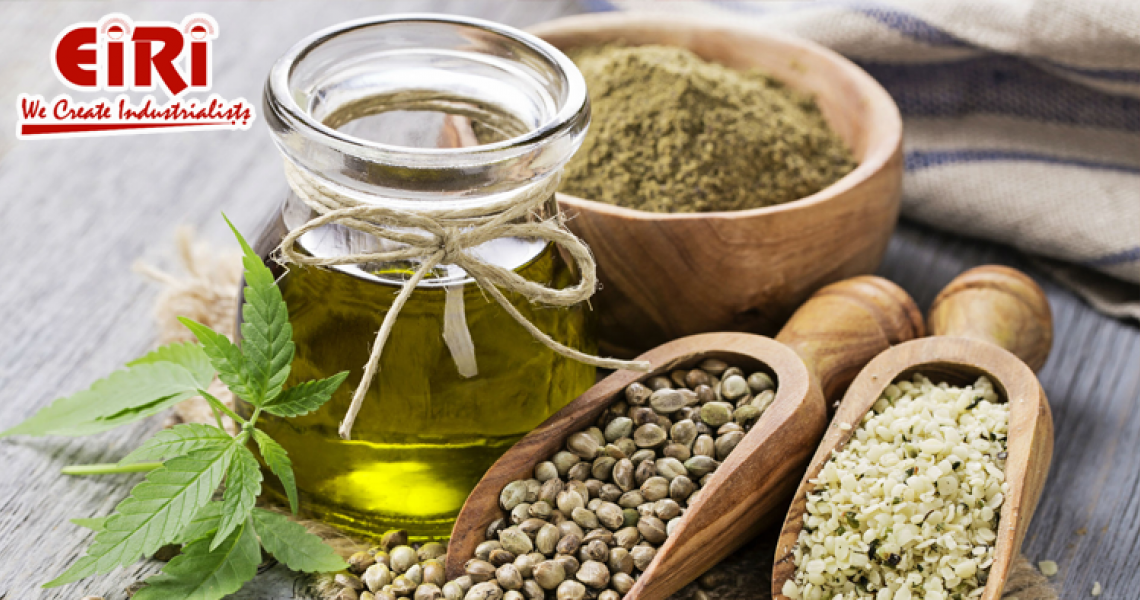Hemp By-Products Industry - Future Scope

Introduction
For ages, probably millennia, hemp has given the necessary raw materials and a high protein and health-promoting food source. The usage of the hemp plant in construction, papers, textiles, ropes, and other products has significantly advanced western civilization. Until the 1930s, hemp was farmed in most of the world's nations, including Europe, until its cultivation vanished.
Since the turn of the century, hemp has returned to prominence and is now one of the agricultural and commercial markets with the fastest growth rates. In order to be clear, we are referring to "hemp" (Cannabis sativa L.), which is legal in the EU and has a THC content of less than 0,2%. It proves that hemp is not psychoactive.
How is Hemp By-Products Industry Performing?
Every sector of the economy faces opportunities and difficulties, but I think the CBD sector is in a special—and crucial—position. Hemp-derived compounds with no more than 0.3% THC still exist in a legal grey area as a drug that was previously prohibited by the federal government until the 2018 Farm Bill was passed. This ambiguity generates a variety of unexpected obstacles in product production, marketing, and finance. However, both the market and the business are expanding extremely quickly.
The Presence of the Hemp By-Products Industry
Every sector of the economy faces opportunities and difficulties, but I think the CBD sector is in a special—and crucial—position. Hemp-derived compounds with no more than 0.3% THC still exist in a legal grey area as a drug that was previously prohibited by the federal government until the 2018 Farm Bill was passed. This ambiguity generates a variety of unexpected obstacles in product production, marketing, and finance. However, both the market and the business are expanding extremely quickly. So, the hemp-products industry is experiencing tremendous growth nowadays.
The Future Scope of the Hemp By-Products Industry
The future of the drug, which has been gradually legalized, is bright. We will analyze the future of the hemp by-products industry shortly:
The CBD industry is expected to grow significantly and diversify.
Just two years following the federal legalization of cannabinoids derived from hemp, sales of CBD in the United States reached a staggering $4.6 billion in 2020. Two significant projections predict that the U.S. market will reach $15 billion to well over $20 billion by 2025 and 2024, respectively. This boom is only anticipated to pick up more speed in the future.
More Products of the CBD Material Will Drop in the Market.
Presently, CBD businesses offer a huge selection of goods. However, when more businesses release goods that hyper-concentrate on all of the over 100 lesser cannabinoids present in hemp plants, this diversity will grow. For particular use situations, cannabinol (CBN), cannabigerol (CBG), and other chemicals will be the emphasis of formulations. It will also ensure the economic growth of the hemp by-products industry.
Access to big-box retailers will boost sales while enhancing and stabilizing supply networks.
It is predicted that CBD will become widely used in traditional brick-and-mortar retail once corporations can promote it as a nutritional supplement. Big-box retailers will provide a variety of topical treatments and ingestibles in different categories of products and uses, in particular.
The market might increase significantly as a result of this new distribution, which would also be advantageous to a number of supply chain participants, such as hemp growers and the labs that extract, distill, crystallize, and isolate CBD from plants. A specific advantage will be encouraging more reputable labs to participate in the CBD market, as many institutions are now reluctant to veer from their core specialties.
Through acquisitions, more well-known players will enter the competition.
As CBD's first "Wild West" business experiences difficulties in life, large corporations have been cautious to embrace it. However, once the regulatory regime is clear and stable, we forecast that several corporate juggernauts will try to diversify their product portfolios with CBD and add new goods that offer up new growth opportunities. Businesses like Procter & Gamble, Johnson & Johnson, Coca-Cola, Unilever, and others could enter the industry by acquiring established CBD-leading companies.
The levels of education, quality control, and safety will soar.
Along with the growing acceptance of CBD, public awareness of cannabinoids will reach a record level. Customers will have the opportunity to buy products that are intelligently regulated with more assurance and safety thanks to this.
The majority of CBD companies will need to increase their efforts in quality control and regulation if they want to survive.
Conclusion
CBD has a promising future, but it still depends on important developments.
The CBD market is a kind of unstoppable force. The market is currently worth several billion dollars, and it will only expand as more people express their preferences. The ability to promote via conventional channels, use standard online payments, and acquire funding are just a few of the particular challenges that CBD entrepreneurs still have to overcome.










